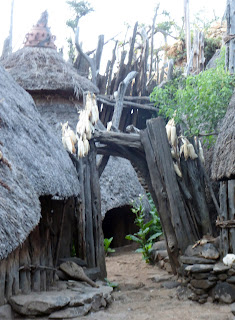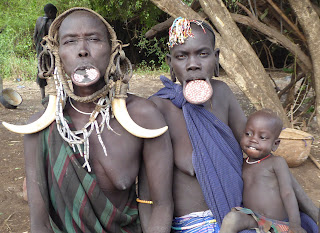the other bits of my Ethiopia trip

I've already described the highlights (the Mursi lip-plates and the Hamar bull-jumping), but there were other parts to my Ethiopia trip too - meeting people from the Dassanech and Dorze (and seeing where they live), and meeting the King of Konso. He rules over some 400,000 people, although from his explanations as to his role, he takes rather more of a Queen Elizabeth II approach, talking of 'serving' his people rather than 'ruling' them. This to the left is his palace. He actually met Prince Charles some years ago, and hadn't heard that the Prince had just a couple of days before become a King! & we met an old Jamaican guy in Sheshamene (the rastafarian town in their 'promised land' of Ethiopia). This guy had long ago hosted Bob Marley at his place, and he was eager to show us his old balck-and-white photos of the event. He also told us a little about the Rastafarian beliefs, and shared a copy of a speech that Emperor Haile Selassie had made abo


%20instruments%20of%20war%202.JPG)
